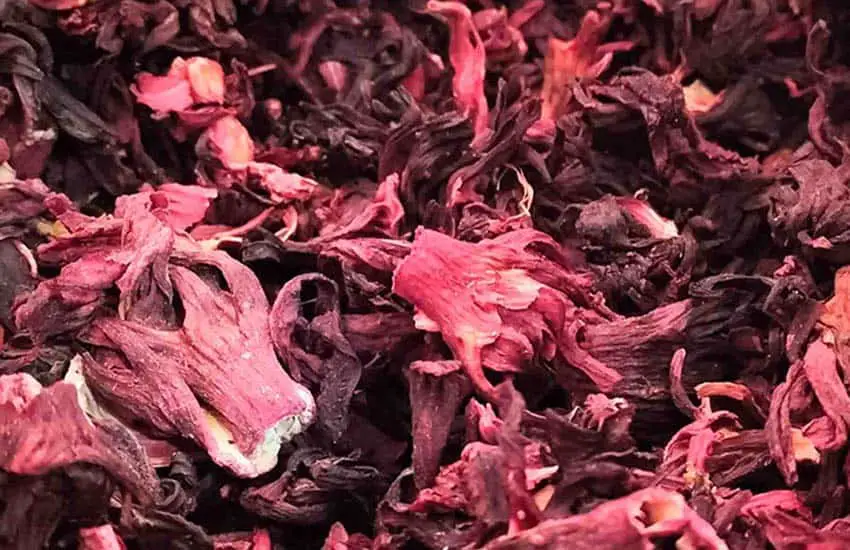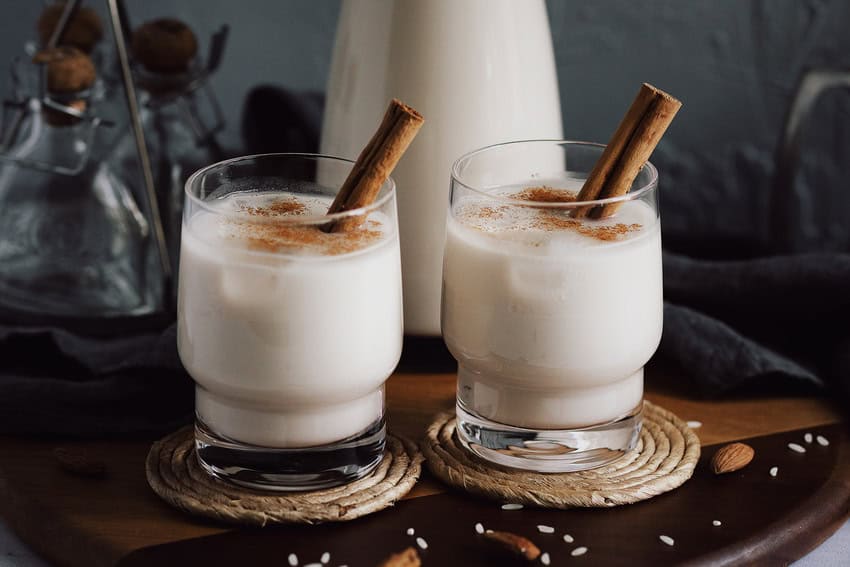Refreshing and flavorful, aguas frescas are a treasured part of Mexico’s gastronomic heritage. Sold widely by vendors, shops and restaurants, the non-alcoholic drinks are instantly recognizable. Both by the barrel-shaped yet transparent glass or plastic vitroleros that often contain them and by the inevitable kaleidoscopic array of colors whenever more than a few are placed side-by-side. Indeed, the colors of aguas frescas are like a map of Mexico done in miniature, tracing the abundance of fruit, flowers and seeds that flourish in various locales.
The history of aguas frescas in Mexico
People have been flavoring water with fruit and flowers in Mexico since ancient times. Sugar, the most common sweetener for modern aguas frescas, was introduced later, after the Spanish invasion of the early 16th century.

Many of the popular aguas frescas found in Mexico today — notably, jamaica and horchata — were made possible by the trade network the Spanish established during the colonial era. However, aguas frescas developed regionally with locally available ingredients, from grains and legumes like barley and alfalfa to nuts and seeds like almonds and chia and flowers and spices like hibiscus and cinnamon. Fruits were even more frequently used, of course, thanks to a natural bounty that included introduced plants like grapefruit, mango, melon, orange, papaya, passionfruit, peach and local ones including sapote, soursop, guava, tejocote and xoconostle.
Regional variations still abound for these drinks, with recipes richly evocative of their place of origin. For example, agua de betabel (beet), associated with Tlaxcala, mixes water with fresh beet and orange juice. Agua de matalí, a favorite in Chiapas and Tabasco, features the edible leaves of spiderwort plants. There’s also agua de nance, a fruit-based specialty native to Nayarit; and agua de horchata con tuna in Oaxaca, which pairs the rice-based, cinnamon-flavored horchata with fruit from the prickly pear cactus. Agua de xonocostle hails from Guanajuato, with its cactus-fruit pulp sweetened with sugar, as virtually all of these drinks are. The list goes on and on.
Clay pots were the original containers that kept aguas frescas slightly chilled a few degrees cooler than room temperature so that little or no ice was needed. Hence the word fresca, or fresh, as a descriptor. Some traditional producers, like Casilda Aguas Regionales in Oaxaca, still use clay pots. However, the distinctive vitroleros and bottled versions are now more common. As for the best time to drink aguas frescas, there are no bad options, but summer is the ideal season, and lunch is considered the perfect meal; largely, one presumes because so many restaurants offer aguas frescas as part of lunchtime menu deals.
Agua de jamaica
Despite the myriad regional variations, a few aguas frescas are widely popular and readily available throughout the country. Agua de jamaica (hibiscus) is one of them. This crimson-colored sipper owes its existence to the Manila-to-Acapulco galleon trade that began in 1565 and connected the Spanish colonies of the Philippines and Mexico. One of the first global trade routes, the yearly Nao de China ships brought Asian specialties to Acapulco and, after a trip overland to Veracruz, on to Spain for 250 years.

Even though hibiscus is native to Asia and Africa, it was only via this peripatetic journey that it finally arrived in Mexico. Perhaps not surprisingly, the state of Guerrero, where Acapulco is located, continues to lead the way in its production, followed by neighboring Michoacán. In 2019, per the Agriculture and Rural Development Ministry (Sader), over 11 million pounds of hibiscus was grown in Guerrero to sate the national appetite for this beloved agua fresca flavor. Most recipes contain only four ingredients: water, hibiscus flowers, sugar and ice.
Agua de horchata
The origins of horchata are in Northern Africa, where the drink is thousands of years old. However, the Spanish recipe for horchata de chufa, made in Valencia with tiger nuts, was the likely genesis for the later Mexican version, which was introduced to Mexico following the Spanish conquest in the 16th century. This domestic agua fresca eschewed tiger nuts in favor of rice, leading to a much creamier, milk-like beverage. It’s also a tastier one, thanks to the addition of flavor-rich ingredients like cinnamon and vanilla.
Although consumed nationally, regional horchata variations remain common. In Comitán, Chiapas, melon seeds are included in the traditional mix, as are almonds and sometimes orange peel. Almonds, it should be noted, are also a favorite in Colima. In Campeche, meanwhile, coconut is the go-to extra. In Veracruz, it’s coyol, a fruit sourced from a species of palm tree. In Oaxaca, as previously noted, tunas, or the fruits of the prickly pear cactus, are a popular flavor enhancer. But so, too, is jiotilla, another cactus fruit. Milk can likewise be added for sweetness. In Mexico City, condensed milk is preferred.

Agua de limón y chía
Chia seeds are considered a superfood and like a lot of other wonderful things — chocolate and vanilla, to name a couple of biggies — they’re originally from Mexico. Sourced from the flowering plant Salvia hispanica, these seeds and the attendant fruit pulp have been consumed in Mexico for thousands of years, with the Olmec culture noted as the first to domesticate them for everyday use.
In the United States, chia seeds are commonly packed into baked goods for added nutritional value. In Mexico, they’re a key ingredient in one of the country’s most popular aguas frescas: agua de limón y chía. This beverage has only four ingredients — lime, chia, sugar and water — and its green hue means it can be lined up next to vitrolero jugs of horchata and jamaica on patriotic occasions to mimic the colors of the Mexican flag.
Agua de tamarindo
Tamarind, like hibiscus, came to Mexico via Africa and Asia during the colonial period. Due to its balanced blend of sweet and sour, it has has long been prized as a culinary ingredient to flavor candies, cocktails, sauces and — yes — aguas frescas. The recipe for agua de tamarindo is as elegantly simple as the name would suggest, requiring only tamarind pods, water, sugar and ice. It’s another widespread favorite.
What’s the most consumed agua fresca in Mexico? There are no definitive figures, but tamarindo, jamaica, horchata and limón y chía are the most typical examples and thus the best introduction to these delicious drinks.
Chris Sands is the Cabo San Lucas local expert for the USA Today travel website 10 Best, writer of Fodor’s Los Cabos travel guidebook, and a contributor to numerous websites and publications, including Tasting Table, Marriott Bonvoy Traveler, Forbes Travel Guide, Porthole Cruise, Cabo Living and Mexico News Daily. His specialty is travel-related content and lifestyle features focused on food, wine and golf.
